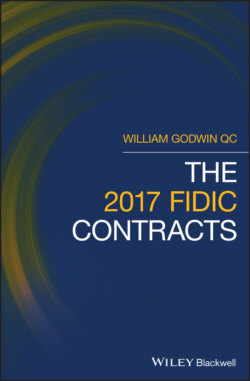Читать книгу The 2017 FIDIC Contracts - William Godwin - Страница 54
3.2.2 Instructions
ОглавлениеClause 3.5 of the 2017 Red and Yellow Books and clause 3.4 of the 2017 Silver Book deal with the Engineer's/Employer's instructions in largely the same way. This contrasts with the 1999 editions of the three Books, most noticeably in that in the Red Book the Engineer's instructions did not have to be in writing, although he was meant to give his instructions in writing wherever this was practicable. Provision was then made in clause 3.3 for confirmation of oral instructions, the confirmation then to be taken as constituting the Engineer's written instruction. In the 2017 editions of all three Books instructions must be in writing by virtue of clause 1.3, which expressly provides for instructions to be in writing and to comply with the other requirements of that clause.
Another difference between the 1999 editions of the three Books is that the instructions which the Engineer, in the Red and Yellow Books, might issue were to be instructions which may be necessary ‘… for the execution of the Works and the remedying of any defects, all in accordance with the Contract’ (clause 3.3). In the 1999 Silver Book, on the other hand, the instructions which the Employer might issue were to be instructions which may be necessary ‘… for the Contractor to perform his obligations under the Contract’ (clause 3.4).
In the 2017 editions of all three Books this wording has been replaced by a uniform wording: instructions may be issued where they are necessary ‘… for the execution of the Works, all in accordance with the Contract’. Thus the 2017 editions adopt the wording of the 1999 Red and Yellow Books with respect to the scope of instructions under the Contract, deleting however the words ‘… and of the remedying of any defects’.
It has been suggested by some commentators that this creates a difficulty, in that it is now unclear whether, strictly speaking, the Engineer or Employer is authorised to issue instructions for the remedying of defects. There does not, however, appear to be such a difficulty in reality since clause 7.6 of the three 2017 Books expressly entitles the Engineer or Employer to issue instructions at any time before taking over of the works to repair or remedy plant or materials not in accordance with the Contract, any other works which are not in accordance with the Contract and to carry out any remedial work urgently required for the safety of the works; and clause 7.5 in the three 2017 Books contains provision for notices to be given in respect of defective works as a result of examination, inspection, measurement or testing of any plant, materials, design or workmanship, with a power in the Engineer or Employer to give instructions under clause 7.6 where necessary. To have retained the old wording might, indeed, have generated confusion as to the appropriate clause under which an instruction to remedy defects prior to taking over might be given. Rather than retaining the old reference to the general power to issue instructions to remedy any defects, the 2017 editions have made the exercise of that power specific to clauses 7.5 and 7.6; in relation to defects dealt with after taking over, the provisions relating to the Defects Notification Period apply.
